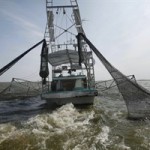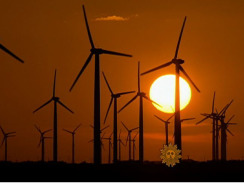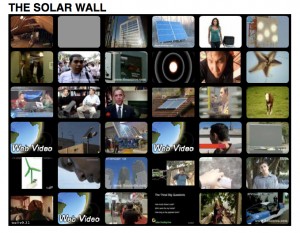Leanardo Dicaprio has had a string of movie successes; The Departed, Revolutionary Road, Shutter Island and the current summer hit,Inception. Just like the movie Inception there’s more to Dicaprio then what meets the eye, ah I mean a dream. Rewind to 2007 to Dicaprio’s apocalyptic environmental documentary The 11th Hour. Was he dreaming? Did 200, 000, 000 million plus gallons of toxic oil just reak havoc on the Gulf of Mexico, and what of the economic and environmental aftershocks? Was it a projection or just one of those things? Dicaprio’ like other entertainers, including Woody Harrelson, Scarllet Johanson, Will I am of the Black Eye Peas, Cameron Diaz and a host of others have been green evangelists in their efforts to wake us from the nightmare dream of big oil.
The nation needs Washington to put it’s self interest in the oil and coal cartel aside. We need to get our country on a path to renewable and sustainable green living with a bold, innovative job producing national energy policy. Whether you live in Oklahoma or Arizona. Gulf shrimpers are rightfully concerned that the shrimp they’re hauling in now is contaminated despite claims to the contrary by the EPA. Do you think it’s safe to eat shrimp from the Gulf of Mexico at this point? Economist have just revealed that China is now the world’s second largest economy after the US. And China is by the way the largest manufacturer of solar panels in the world. What shall the nation do? Sit idle as elected representatives continue burned out and unsustainable debates?
Dicaprio does have a foundation that takes on environmental causes called The Leonardo DiCaprio Foundation. But Dicaprio is a Hollywood big wig and he has the resources to do this kind of thing. This is what the artist does…they project upon us and we upon them, but in some way we can all find a way to make a difference. Does life imitate art or does art imitate life? The issues regarding this primitive oil and coal burning ritual; its monstrous consequences and the infrastructure that’s been developed around the world to support it is indeed destroying the planet. Other nations around the globe are ahead of the US in terms of renewable energy. If we continue on the path we’re on without setting forth a vision, a bold dream of what our nation’s energy structure will be, one day the big marine freighters coming into our ports won’t be filled with oil (we could run out any way), they”ll be filled with solar panels and wind turbines we have to buy from China.
The 11th Hour – Leonardo Dicaprio
Air District approves $5 million for electric vehicle charging stations
SAN FRANCISCO – The Bay Area Air Quality Management District Board of Directors approved $5 million to support further development of a regional electric vehicle charging infrastructure program in the Bay Area.The electric vehicle charging stations and home chargers is part of the Air District’s Spare the Air program which will make owning an electric vehicle in the Bay Area a viable option for residents. “The past several years have seen exciting progress in the development of electric vehicle technology,” said Air District Executive Officer Jack P. Broadbent. “Creating a useful charging network will make it easier for Bay Area residents to Spare the Air every day by going electric.”
The Air District is working to support at-home electric vehicle charging and to establish a network of accessible charging sites where electric vehicle owners can conveniently recharge while conducting their normal business, running errands or shopping. The program will leverage up to $5 million in Air District funds to support electric vehicle charging infrastructure grants including:
3,000 home chargers at single family and multi-family dwellings
2,000 public chargers at employer and high-density parking areas
50 fast chargers within close proximity to highways
In the Bay Area, the transportation sector accounts for more than 50 percent of air pollution. Significant emission reductions from the transportation sector will help the Bay area attain and maintain state and national air quality standards. The Bay Area Air Quality Management District (www.baaqmd.gov) is the regional agency chartered with protecting air quality in the nine-county Bay Area.
La. shrimpers worry about prices for new season
By CAIN BURDEAU and KEVIN McGILL (AP)
NEW ORLEANS — Shrimpers trawling Louisiana waters Monday in the first commercial season since the Gulf disaster don’t know what dangers from the massive BP oil spill still lurk and what market there will be for their catch if consumers don’t believe the seafood is safe.
Perhaps the biggest fear is that some fisherman might try to sell oil-contaminated shrimp.
“If you see oily shrimp, you got to throw them back over. Go somewhere else. It’s all you can do. And you hope everyone else does the same,” said Dewayne Baham, 49, a shrimper from Buras.
Louisiana shrimp prices rose soon after the Deepwater Horizon rig exploded on April 20, killing 11 workers and triggering the spill that eventually spewed 206 million gallons of oil from BP’s blown-out well into the Gulf of Mexico. The price spike was fed by fears that the shrimp would soon be unavailable. However, despite state and federal assurances that seafood reaching the market was safe, demand dropped and prices crashed a month ago, said Harlon Pearce, a seafood dealer and head of the state’s seafood promotion board.
Ravin Lacoste of Theriot, said he believes his fellow shrimpers know better than to turn in a bad catch. “If you put bad shrimp on the market — we in enough trouble now with our shrimp,” Lacoste said. “You might can go in the closed waters and catch more shrimp. But it ain’t worth it.”
Pearce did what he could over the weekend to allay fears over safety. On Friday, he was in a group that set out with several fishermen on a test run around Grand Isle and Barataria Bay.They trawled several areas, pulling up nets that held shrimp, mud, jellyfish or driftwood — all without the signs or telltale smell of oil.
U.S. Commerce Secretary Gary Locke also will be in Louisiana on Monday to lunch with fishermen and talk to seafood industry representatives. The spill has put a crimp in the fishing industry in a state that ranks first in the nation in producing shrimp, blue crab, crawfish and oysters, which are a $318-million-a year business in Louisiana. Seafood testing begins when there’s no longer visible oil in a particular area. First, inspectors smell samples for oil. Then comes testing at federal or state laboratories. To reopen seafood harvesting, the samples must test below Food and Drug Administration-set levels of concern for 12 different potential cancer-causing substances. BP also used chemical dispersants to break up the crude, but the government has not yet developed a test for the materials in seafood.
Shrimpers also are concerned about how much they’ll be able to make on their product. “I don’t think people are worried so much about the resource, but the price,” said Rusty Gaude, fishery agent for LSU Sea Grant Program. And fishermen need to know what waters are open. Slowly, more and more waters closed because of the spill are reopening. However, shrimping remains forbidden in federal waters off Louisiana, Mississippi and Alabama, and most of the catches have come off Texas and Florida, said Roy Crabtree, the regional administrator for the National Marine Fisheries Service’s southeast region.
Commercial shrimpers are heading out as the drilling of a relief well meant to plug BP’s runaway well permanently nears completion. Once the relief well is complete, a so-called bottom kill procedure can begin, in which mud and cement would plug the well from below the seafloor.
Engineer John Wright has never missed his target over the years, successfully drilling 40 relief wells that were used to plug leaks around the world. People along the Gulf Coast and others are hoping he can make it 41-for-41. “Anyone who has ever worked extremely hard on a long project wants to see it successfully finished, as long as it serves its intended purpose,” Wright, 56, who is leading the team drilling the primary relief well, said in a lengthy e-mail exchange with The Associated Press. BP began work on its primary relief well in early May. But about two weeks ago, around the time the company had done a successful static kill pumping mud and cement into the top of the well, executives and the government began signaling that the bottom kill procedure might not be needed.
But retired Coast Guard Adm. Thad Allen, the government’s point man on the spill, said the relief well would be finished so the well could be killed. The bottom kill won’t be started until at least next weekend. Despite the waters reopening, many fishermen distrust state wildlife officials and may be reluctant to head out right away, said Patrick Hue, 49, a shrimper out of Buras.
“Nobody wants to rush into this and then someone gets sick on the seafood and the first thing you know, no one wants to buy our seafood,” he said. Seafood dealer Pearce, however, said many shrimpers will be unable to resist. “Opening day is like a religion to these people,” he said. “It’s a way of life down here.”
Alternative Energy: Will U.S. Lead or Follow?
Oil Spill Turns American Minds to Renewable Power Sources As
Inventors, Investors Wait for Gov’t to Get Serious
See the video
WHAT’S INSIDE
SUBSCRIBE TO UPDATES HERE
NEW! ECO TRAVEL
NEW: ORGANIC
NEW! WIND & WAVES
 TV
TV
VISIT THE SOLAR WALL
QUESTPOINT GOES MOBILE – Beta





